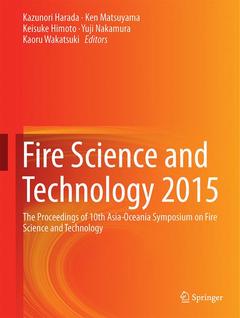Description
Fire Science and Technology 2015, 1st ed. 2017
The Proceedings of 10th Asia-Oceania Symposium on Fire Science and Technology
Coordinators: Harada Kazunori, Matsuyama Ken, Himoto Keisuke, Nakamura Yuji, Wakatsuki Kaoru
Language: English
Subjects for Fire Science and Technology 2015:
Publication date: 10-2016
Support: Print on demand
Publication date: 06-2018
Support: Print on demand
Description
/li>Contents
/li>Comment
/li>
This book focuses on topics in the entire spectrum of fire safety science, targeting research in fires, explosions, combustion science, heat transfer, fluid dynamics, risk analysis, structural engineering, and other subjects. The book contributes to a gain in advanced scientific knowledge and presents or advances new ideas in all topics in fire safety science.
Two decades ago, the 1st Asia-Oceania Symposium on Fire Science and Technology was held in Hefei, China. Since then, the Asia-Oceania Symposia have grown in size and quality. This book, reflecting that growth, helps readers to understand fire safety technology, design, and methodology in diverse areas including historical buildings, photovoltaic panels, batteries, and electric vehicles.
contributions by leading international researchers in the field of fire safety
science and technology
Is the first book to focus on comprehensive topics related to fire safety science, especially with regard to historical and high-rise buildings and recyclable fuel and renewable resources
Contributes to a better understanding of fire safety design and methodology in various areas including historical and high-rise buildings and photovoltaic panels, batteries, and electric vehicles



